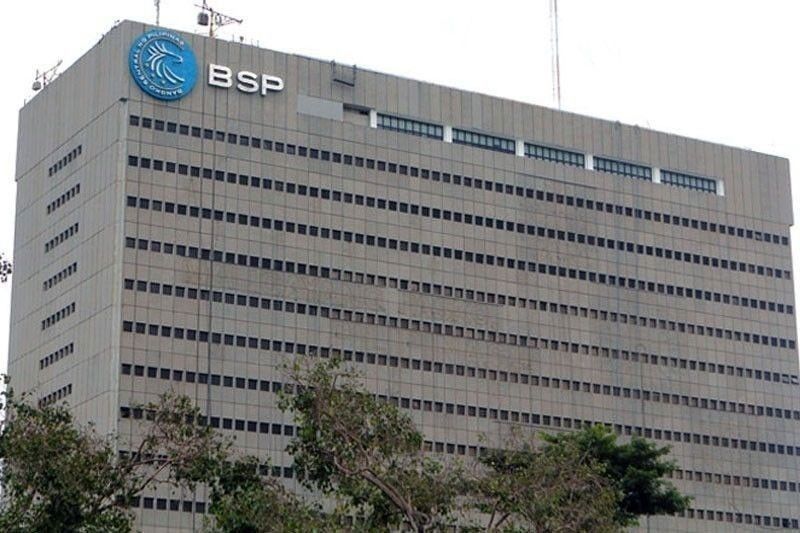BSP widely seen raising interest rates until 2023

MANILA, Philippines — Economists expect the Bangko Sentral ng Pilipinas (BSP) to extend the tightening cycle by hiking interest rates until next year to address soaring inflation.
Aris Dacanay, economist for ASEAN at British banking giant HSBC, said in a commentary that the BSP may raise interest rates by another 100 basis points this year and another 50 basis points next year.
“The BSP will likely have to hold its ground and keep on hiking to prevent inflationary expectations from being disanchored,” Dacanay said.
The BSP has so far raised interest rates by 125 basis points since it started its liftoff last May to curb rising inflationary pressures.
Including the back-to-back 25-basis-point increases in May and June as well as the huge 75-basis-point hike during a surprise off-cycle rate-setting meeting last July 14, the benchmark interest rate now stands at 3.25 percent from an all-time low of two percent.
Dacanay said HSBC sees the BSP raising interest rates by 25 basis points in the remaining four rate-setting meetings for the rest of the year, bringing the overnight reverse repurchase rate to 4.25 percent by the end of 2022.
For 2023, the British banking giant sees the BSP hiking rates by another 50 basis points in the first quarter before pausing for the remainder of the year at 4.75 percent.
HSBC raised its inflation forecast to 5.3 percent this year, but retained next year’s projection at 3.7 percent.
Inflation averaged 4.7 percent in the first seven months, staying above the BSP’s two to four percent target range, after accelerating to 6.4 percent in July from 6.1 percent in June.
“In most cases, month-on-month inflation needs to peak first before year-on-year inflation peaks. Year-on-year inflation can peak at the same time as its month-on-month counterpart, but the latter will need to drop by a considerable amount. In this note, we look closely at the numbers and check where month-on-month inflation will likely tread in the next few months and how y-o-y inflation will follow,” Dacanay said.
HSBC sees the peak of year-on-year inflation up ahead, but it seems to be stretched, bumpy, and cloudy.
Bank of the Philippine Islands lead economist Jun Neri said the BSP would hike rates until the end of the year as the economy has enough capacity to absorb the ongoing policy normalization.
“While a hike toward 4.25 percent by end-2022 will be a slight damper on demand, the contractionary risk of de-anchoring inflationary expectations carries more weight,” Neri said.
Neri explained that household consumption accounts for at least two-thirds of the economy, and not getting inflation in check would likely have a more severe impact on consumption and overall demand.
According to Neri, the economy managed to grow by 6.3 percent in 2018 and 6.1 percent in 2019 even if the policy rate was above four percent.
“Supply disruptions have kept food prices elevated and could be vulnerable to higher transport costs, trade restrictions, and weather disturbances. This, along with sustained peso depreciation due to import expansion and hawkish Fed policy will likely compel the BSP keep up with its adjustments through 2023,” Neri said.
ING Bank senior economist Nicholas Mapa sees a more aggressive tightening by the BSP which could bring the reverse repurchase rate to 4.50 percent by the end of the year. “We expect the BSP to remain hawkish with rate hikes in the pipeline,” Mapa said.
BSP Governor Felipe Medalla, who earlier signaled a rate increase of 25 or 50 basis points on Aug. 18, said the central bank recognizes the broadening of price pressures amid the emergence of second-round effects, including the approved wage and fare hikes as well as elevated inflation expectations.
“The risk to the inflation outlook is tilted on the upside for 2022 and 2023, but is broadly balanced for 2024,” Medalla said.
The BSP chief said upside risks over the near-term continue to emanate from the higher global non-oil prices driven by the protracted war between Russia and Ukraine as well as from the potential second-round impact of higher oil prices on the prices of goods and services.
Likewise, Medalla said domestic food prices also pose upside risks due to shortages in the supply of several key food items.
Meanwhile, Medalla said a slower-than-expected global recovery due to tighter global monetary policy conditions and the continued uncertainty from the pandemic continues to present a downside risk to the outlook.
“The upward adjustment in monetary policy rates in May and June and the off-cycle adjustment in July should help moderate inflation expectations,” the BSP chief said.
- Latest
- Trending
























